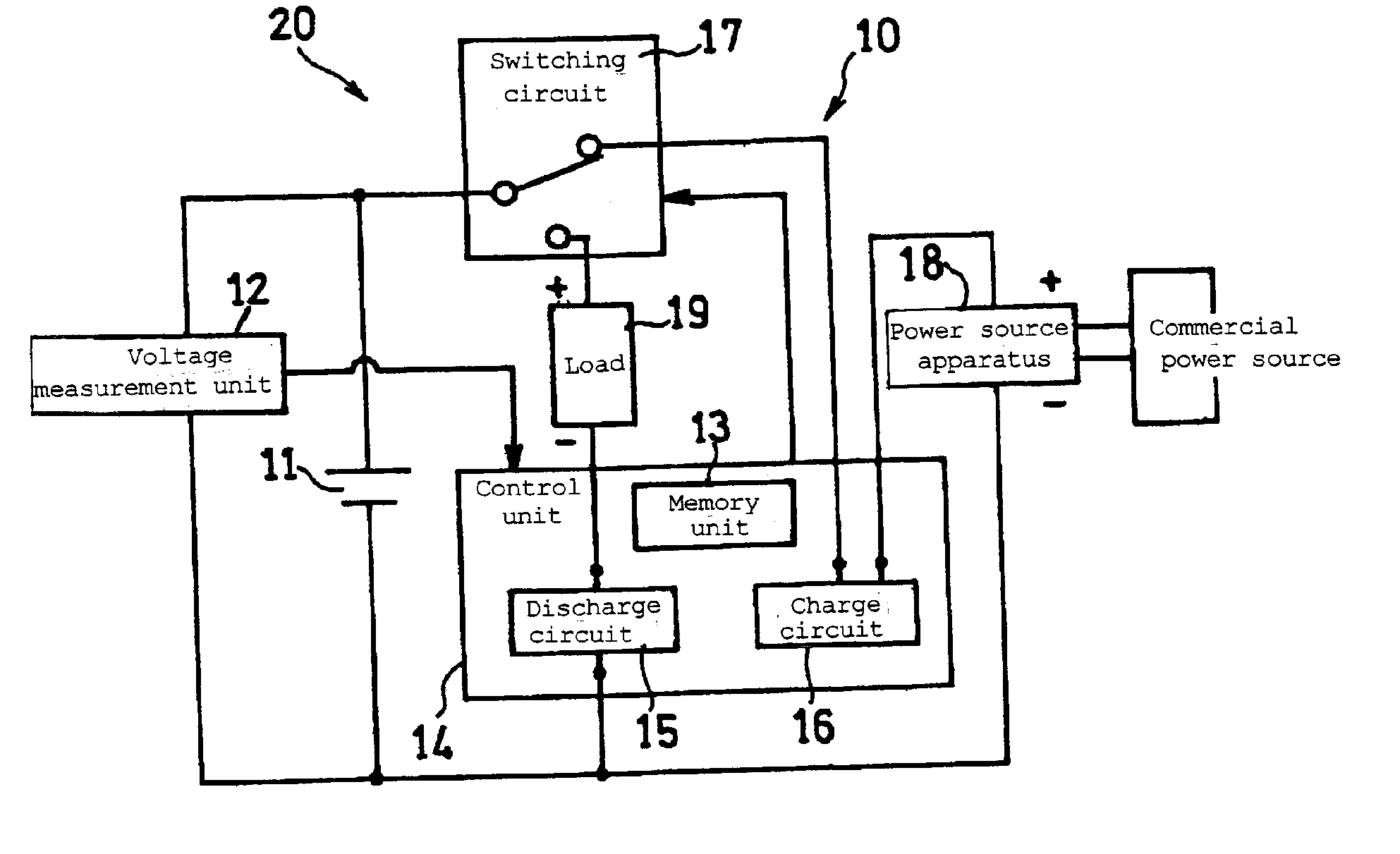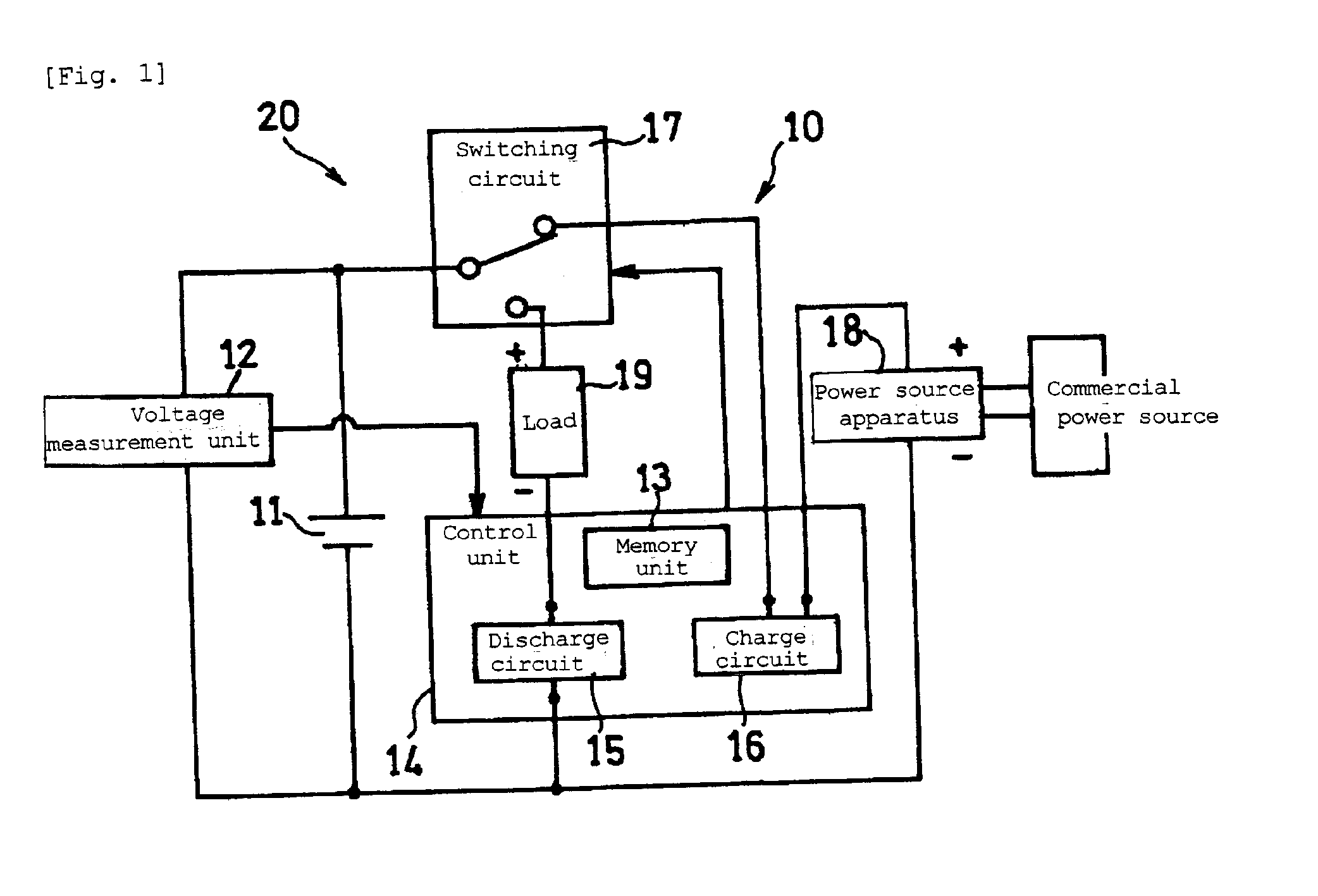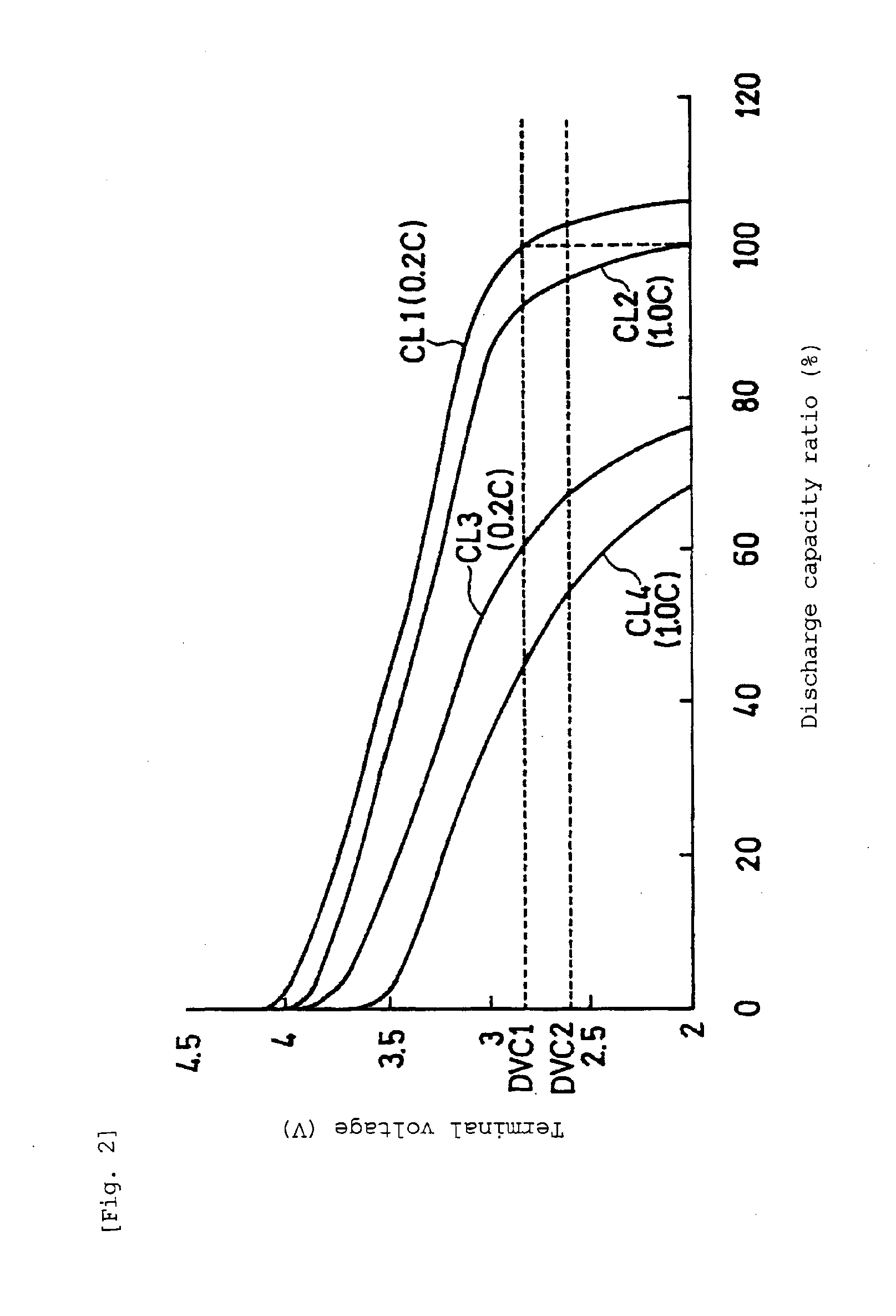Battery pack, discharge system, charge and discharge system, and discharge control method of lithium ion secondary battery
- Summary
- Abstract
- Description
- Claims
- Application Information
AI Technical Summary
Benefits of technology
Problems solved by technology
Method used
Image
Examples
embodiment 1
[0026]FIG. 1 is a circuit diagram illustrating a schematic configuration of a battery pack and a charge and discharge system including the battery pack in accordance with an embodiment of the present invention.
[0027]A battery pack 10 includes a lithium ion secondary battery (battery, hereinafter) 11, a voltage measurement unit 12 that detects terminal voltage of the battery 11, a control unit 14 that controls charge and discharge of the battery 11, and a switching circuit 17. The control unit 14 includes a memory unit 13, a discharge circuit 15, and a charge circuit 16. Although the control unit 14 serves both as a discharge control apparatus and as a charge control apparatus, the charge control apparatus may be configured as a component separate from the battery pack 10. Also, the charge circuit 16 may be included in the charge control apparatus which is a component separate from the battery pack 10. The voltage measurement unit 12 corresponds to a voltage measurement apparatus and...
embodiment 2
[0071]Next, Embodiment 2 of the present invention will be described. Since Embodiment 2 has the same configuration as that of Embodiment 1, drawings referred to in Embodiment 1 is used for explanation.
[0072]The difference of Embodiment 2 from Embodiment 1 is the point that the use frequency of the battery 11 is detected by the internal resistance, not by the difference of voltage ΔV1 between the open circuit voltage (OCV) and the closed circuit voltage (CCV).
[0073]As a method of detecting the internal resistance of the battery 11, there is a method of detecting the internal resistance by generating a predetermined pulse current from the battery 1 and detecting the internal resistance on the basis of a current value Ipul and a change amount ΔV2 in the terminal voltage (OCV) of the battery 11 measured by the voltage measurement unit 12. The ratio R of the change amount ΔV2 to the current value Ipul is compared with a predetermined value B from the relation of current×resistance=voltag...
embodiment 3
[0078]Next, Embodiment 3 of the present invention will be described. Since Embodiment 3 has the same configuration as that of Embodiment 1, drawings referred to in Embodiment 1 is used for explanation.
[0079]Embodiment 3 is different from Embodiment 1 in the point that the use frequency of the battery 11 is detected by the change of the open circuit voltage from the initial value.
[0080]As a method of detecting the use frequency of the battery 11 by the change of the open circuit voltage from the initial value, there is a method of comparing the open circuit voltage of the battery 11 in the same charged state (charge depth). For example, when the battery 11 is in the fully charged state, the open circuit voltage (OCVPV) of the battery 11 is measured, and the measured value OCVPV is compared with the open circuit voltage measured in the initial use period (OCVSV, initial open circuit voltage, hereinafter) of the battery 11 under the same conditions.
[0081]That is, a difference ΔV3 betwe...
PUM
 Login to View More
Login to View More Abstract
Description
Claims
Application Information
 Login to View More
Login to View More - R&D
- Intellectual Property
- Life Sciences
- Materials
- Tech Scout
- Unparalleled Data Quality
- Higher Quality Content
- 60% Fewer Hallucinations
Browse by: Latest US Patents, China's latest patents, Technical Efficacy Thesaurus, Application Domain, Technology Topic, Popular Technical Reports.
© 2025 PatSnap. All rights reserved.Legal|Privacy policy|Modern Slavery Act Transparency Statement|Sitemap|About US| Contact US: help@patsnap.com



